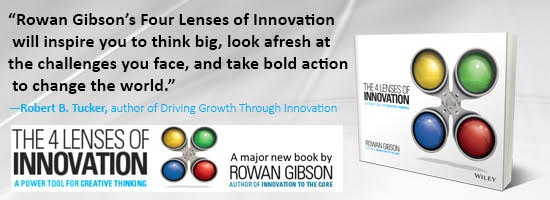Tips for Facilitating Meetings with Different Personality Types
 Anyone who has lead a meeting has been there. You are leading a meeting, ideation session or workshop, and watching the meeting run off track or hijacked by the mix of personalities in the room. Getting the conversation back on course can be a huge effort, assuming the meeting gets back on track at all. Leading conversations with many personality types, especially when the attendees’ personalities are clashing, can result in a less than successful session. As the facilitators and leaders of the meetings, we have the responsibility to set the tone and agenda, as well as create a productive, safe environment in which all can participate.  Fortunately, there are a few tips to help us facilitate meetings with common personalities that seem to be present in most meetings.
Anyone who has lead a meeting has been there. You are leading a meeting, ideation session or workshop, and watching the meeting run off track or hijacked by the mix of personalities in the room. Getting the conversation back on course can be a huge effort, assuming the meeting gets back on track at all. Leading conversations with many personality types, especially when the attendees’ personalities are clashing, can result in a less than successful session. As the facilitators and leaders of the meetings, we have the responsibility to set the tone and agenda, as well as create a productive, safe environment in which all can participate.  Fortunately, there are a few tips to help us facilitate meetings with common personalities that seem to be present in most meetings.
The Initiator
The Initiator is confident, proactive and full of ideas.  They can help get things started and often have a suggestion or proposal.
Tips: The Facilitator can lean on the Initiator to help keep a positive environment and stimulate others. The Initiator expects to be actively praised and recognized for what they bring to the meeting.
The Cheerleader
The Cheerleader offers supportive comments regarding others’ contributions and likes to create a positive atmosphere.
Tips: It is difficult for the Cheerleader to make negative comments or difficult decisions so the Facilitator may need to directly elicit them when not offered voluntarily.
The Diplomat
The Diplomat is good at defusing conflict, asking for clarification, and using humor to try to distract from friction between other session attendees. Â They may become frustrated in a tense meeting.
Tips: The Facilitator may attempt to maximize the Diplomat’s engagement and involvement in the meeting, even if no tension or friction is occurring at the time.
The Talker
The Talker may discuss their point in an indirect or unstructured manner, often with tangents, and hold the floor too long. When they do not have the focus of the meeting room, they hold side conversations, on and off the topic being discussed.
Tips: The Facilitator can subtly interrupt the Talker by summarizing the Talker’s relevant points.  In a non-confrontational way, ask the speakers in the side conversation to repeat the points they would like to make. If side conversations continue, ask the Talker in private (during a break or prior to the next meeting) to limit the side conversation.
The Quiet-One
The Quiet-One is just that, quiet, not disinterested. They may lack confidence or are concerned about a negative reaction to the points they want to make. They may not voluntarily participate throughout the entire meeting. The Quiet One is apprehensive of sharing publicly.
Tips: The Quiet-One requires direct and positive encouragement to participate and contribute. The Facilitator may informally ask for the Quiet One’s opinions prior to the session and offer praise when appropriate as further encouragement.
The Smarty-Pants
The Smarty-Pants has a strong need to show their knowledge of every topic. This can lead to tangential discussions or unnecessarily getting the conversation mired down with details.  They may also interrupt others to make points before others have the opportunity to do so. They want to be seen as the person with all the answers. Often the need to be heard is based on an unconscious degree of insecurity.
Tips: The Facilitator can interrupt and guide the conversation in a similar approach as with the Talker.  Directly confronting the Smarty-Pants will make them feel attacked and may provoke a negative reaction.
The Interjector
The Interjector frequently and repeatedly interrupts others. This behavior may spread to other meeting attendees resulting in losing meeting effectiveness or confrontation between attendees.
Tips: The Facilitator needs to directly and diplomatically challenge the Interjector and ensure the original speaker can finish making their point. It may be valuable to acknowledge the Interjector and reassure them they will have an opportunity to speak at the next opportunity. The Facilitator will function as a conversation traffic cop.
The Critic
The Critic is the opposite of the Cheerleader. The Critic is quick to criticize, often without supporting reasons or offering alternative proposals. The Critic may also be very direct and begin making personal comments about others if the behavior goes unchallenged.
Tips: The Critic’s behavior needs to be addressed quickly, yet indirectly. As soon as they disagree with whoever is speaking, ask them to explain their reasons for disagreeing. Also ask them to propose their alternative. Ensure the request for a deeper explanation is non-aggressive with a focus on the substance of the conversation and not on the Critic’s behavior. The Facilitator asking for justification of the negative comments can begin to move the meeting in a constructive direction.
The Dictator
The Dictator will deliberately and consciously attempt to monopolize the discussion, hijack others’ ideas, and take up meeting time.   They have a very high opinion of their ideas and less of the ideas of others. They are intolerant of criticism, be it constructive, diplomatic or otherwise. They are also impatient with anything they view as a lack of progress, others not making their point quickly enough, or a point they do not see as important.
Tips: The Dictator will enjoy the challenge of a direct confrontation. However, quick intervention is required so they do not derail the conversation by intimidating, dominating, and discouraging others to speak up. The Facilitator should expect a reaction when attempting to limit the Dictator’s behavior. The best approach is to consistently and diplomatically make an unemotional reference to time constraints and the need for everyone to participate. The Dictator will make their displeasure known. It is in the Facilitator’s best interest to not react and maintain a “poker faceâ€.  The Dictator may begin acting as the Critic, in which case ask them to explain their position and propose alternatives with which they agree.
Psychology outlines nine personality types we encounter in meetings. Understanding and recognizing the characteristics of each personality and how to effectively deal with them assists us as the facilitator to hit the session agenda’s goals in a professional, timely manner, in a way where all the attendee’s feel they have been heard. Generically speaking, outlining the agenda, time constraints, goals and meeting rules at the beginning of the meeting can also help the Facilitator lead a productive meeting.
Wait! Before you go.
Choose how you want the latest innovation content delivered to you:
- Daily — RSS Feed — Email — Twitter — Facebook — Linkedin Today
- Weekly — Email Newsletter — Free Magazine — Linkedin Group
 Daniel Nolan is the Founder & Chief Idea Guy/Principal Consultant at Denovo, an innovation consulting group, where he partners with clients to promote sustainable growth and build innovation capabilities. Daniel developed the Rapid Deployed Innovation System (RDIS) and Holistic Integrated Innovation Framework (HIIF). His company is dedicated to a holistic approach based on real world consulting experience, psychology of the creative process, and current academic research.
Daniel Nolan is the Founder & Chief Idea Guy/Principal Consultant at Denovo, an innovation consulting group, where he partners with clients to promote sustainable growth and build innovation capabilities. Daniel developed the Rapid Deployed Innovation System (RDIS) and Holistic Integrated Innovation Framework (HIIF). His company is dedicated to a holistic approach based on real world consulting experience, psychology of the creative process, and current academic research.
NEVER MISS ANOTHER NEWSLETTER!
LATEST BLOGS
Disrupt yourself, your team and your organisation
As we move towards the beginning of a new year in the cycle of seasonal changes, here in Melbourne, Australia,…
Read MoreCatalysing change through innovation teams
What makes Israel so innovative? And what has this got to do with teaming? One of the key discoveries, we…
Read More



